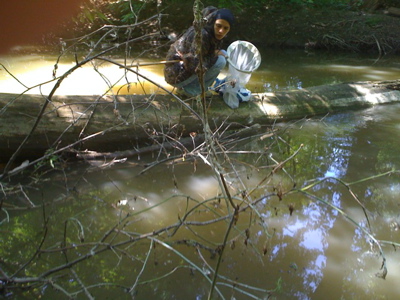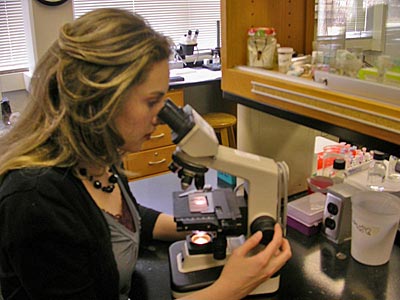
In fact, these University of Michigan-Dearborn students enthusiastically trek into the woods in search of Arachnids as part of their research with Anne Danielson-Francois, an assistant professor of biology at UM-Dearborn.
The trio is so passionate about spiders and the research they are conducting that each was chosen to receive an undergraduate diversity fellowship co-sponsored by the National Science Foundation (NSF) and the National Evolutionary Synthesis Center (NESCent).
The fellowships will allow the students to present and highlight their individual research projects later this month during the Evolution 2010 Conference in Portland, Ore. which is a joint annual meeting of three organizations: the Society for the Study of Evolution (SSE), the Society of Systematic Biologists (SSB) and the American Society of Naturalists (ASN).
“This is a national competition and only 25 fellowships were awarded by the society this year,” said Danielson-Francois. “The fact that UM-Dearborn was awarded three fellowships is spectacular, as their fellow nominees are from Harvard, Duke, University of Texas and Vanderbilt universities, among others. Our students will be participating in the fellowship program and receiving individual mentoring from graduate students, post-doctoral students and faculty in evolutionary biology throughout the meetings.”
During the conference, Awad, Cole and Gagnon will have the opportunity to highlight their research. Awad has studied the movement of toxic heavy metals through the food web of invertebrates. Cole, along with her research partners Chueh Hou and Joseph Stude, has examined the paternity patterns in the tropical Giant Wood spider and Gagnon looked at sperm release patterns in two species of funnel-weaving spiders.







